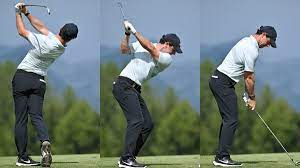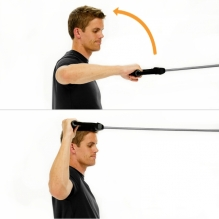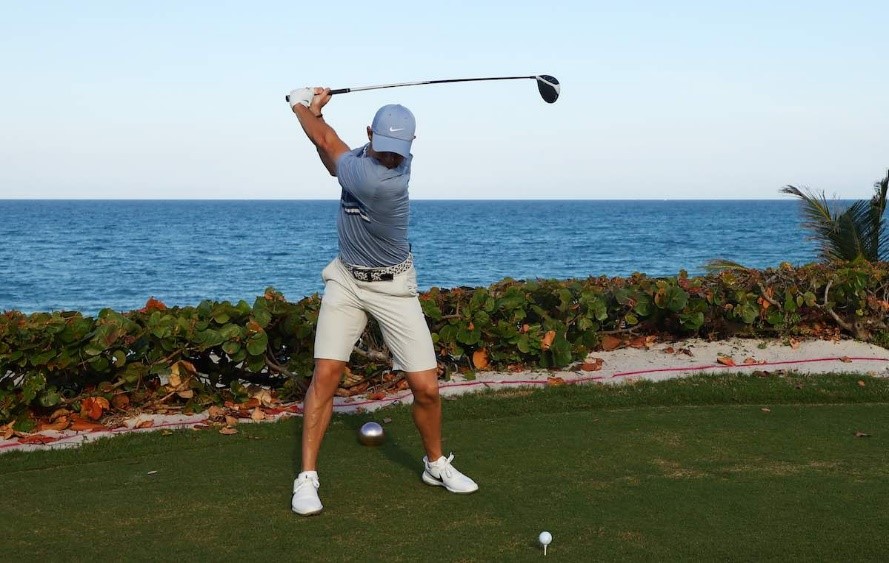 Addressing Mobility That May Affect Your Golf Swing
Addressing Mobility That May Affect Your Golf Swing
by James Poupongtong PT, DPT, TPI Certified
AzOPT Buckeye Staff Physical Therapist
Since the start of the pandemic, golf as a sport has exploded in popularity. In 2020, there was an estimated 24.8 million golfers, an increase of 2% from the previous year, the largest growth in 17 years. As long as there are more golfers, there must be more golfing injuries. Some injuries can include back pain, knee pain, and golfer’s elbow. Injuries have unfortunately become more common as people begin to start playing golf without proper warm up or returning to the sport after being away from so long.
I recently became TPI certified, which is through the Titleist Performance Institute. The course involved swing analysis and a physical golf screen to check for any physical impairments that may limit a golfer’s physical ability to complete all the necessary components of the swing. These tools allow me to be able to look into the relationship between the human body and completing an appropriate swing. There is not one perfect swing, but a perfect swing for each golfer.
Because the golf swing is incredibly dynamic and complex, there are many physical requirements of the human body in order to reach the full potential of your golf swing. Most people think that all they need for a great golf swing is hip and back mobility. While it is true that your hips and back play a huge role in swinging a golf club appropriately, other components of the body that are not commonly thought of that can impact your golf swing include shoulder and neck mobility.
Shoulder Mobility
 How do you know if you have enough shoulder mobility? Here is a simple test. Stand up with your right arm making a “chicken wing” with your palm down. Then rotate your hand towards the ceiling to have your palm facing in front of you. If your forearm is unable to be vertical, you may have shoulder mobility problems that can impact your swing. You need shoulder mobility in the right side for your back swing and your left side for your follow through if you are a right handed golfer.
How do you know if you have enough shoulder mobility? Here is a simple test. Stand up with your right arm making a “chicken wing” with your palm down. Then rotate your hand towards the ceiling to have your palm facing in front of you. If your forearm is unable to be vertical, you may have shoulder mobility problems that can impact your swing. You need shoulder mobility in the right side for your back swing and your left side for your follow through if you are a right handed golfer.
Neck mobility
 How could your neck mobility impact your golf swing? After all, we are supposed to be looking down at the golf ball throughout our whole swing! When we rotate our trunk or thoracic spine during our back swing and front swing, our head and neck stays still. However, because the thoracic spine is moving relative to our head and neck, we need appropriate neck mobility if we are able to rotate all the way AND keep our head down looking at the ball. Here’s a simple test to determine if you have appropriate neck mobility.
How could your neck mobility impact your golf swing? After all, we are supposed to be looking down at the golf ball throughout our whole swing! When we rotate our trunk or thoracic spine during our back swing and front swing, our head and neck stays still. However, because the thoracic spine is moving relative to our head and neck, we need appropriate neck mobility if we are able to rotate all the way AND keep our head down looking at the ball. Here’s a simple test to determine if you have appropriate neck mobility.
Start by standing with your feet all the way together and head facing forward. Now look to your right as much as you can. Then, look down as much as you can. At this point, your chin should be touching the middle of your collarbone. Repeat going to the left side. If you are unable to touch your chin to either collarbone, you might have limited neck mobility needed for swinging a golf club.
If you failed any of the above screens and you play golf, you might have physical impairments that can affect your golf swing. Swing in for a consultation with a TPI Certified physical therapist. We will perform a full assessment to determine your physical limitations that may impact recreation activities such as golf!
References:
https://www.golfdigest.com/story/national-golf-foundation-reports-numbers-for-2020-were-record-se
https://golf.com/wp-content/uploads/2020/04/PicMonkey-Collage.jpg
https://golf.com/wp-content/uploads/2020/06/GettyImages-12254534021.jpg







